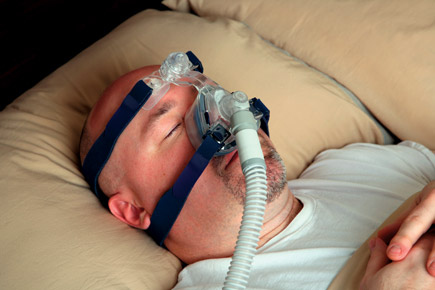New heart disease test, drugs for flu, weight management
This update covers a new test to predict risk of future coronary heart disease events, the first neuraminidase inhibitor for influenza, and a new GLP-1 agonist for obese people.
Recalls, warnings, and label changes
A notice that Alere INRatio and INRatio2 PT/INR monitor systems can provide a significantly lower result than laboratory methods, and so should not be used in patients with a number of conditions, including anemia with hematocrit less than 30%, infections, any other cause of elevated fibrinogen levels, and bleeding or unusual bruising.

A warning on ziprasidone (Geodon) about the risk of Drug Reaction with Eosinophilia and Systemic Symptoms (DRESS). Patients who have a fever with a rash and/or swollen lymph glands should seek urgent medical care and clinicians should immediately stop the drug if DRESS is suspected.
A recall of 2 lots of 0.9% sodium chloride injection by Baxter as a result of 2 complaints of particulate matter that was identified as a fragment of the frangible from the vial adapter.
A recall of 10 lots of mitoxantrone by Hospira due to confirmed subpotency and elevated impurity levels, which could lead to decreased effectiveness, additional dosing, and the potential for cumulative impurity toxicity.
A recall of 1 lot of Virazole (ribavirin powder for solution), 100 mL, 6 g vial, by Valeant Pharmaceutical due to microbial contamination.
A warning and a recall for Wallcur, LLC, simulated intravenous (IV) products due to reports of patients being injected with the products, which are for training purposes only. Serious adverse events have resulted.
A recall of the Nellcor Puritan Bennett 980 ventilator system by Covidien because cracks in the circuit board may cause the display to dim and give off a burning smell.
A recall of KimVent microcuff subglottic suctioning endotracheal tubes by Halyard Health because the cuff inflation may detach from the tube during use (if pulled, tugged, or excess tube/patient movement occurs), which would cause the cuff to gradually deflate, potentially reducing the amount of air that reaches the lungs.
Approvals
The PLAC Test for Lp-PLA2 Activity, a screening test to predict risk of future coronary heart disease (CHD) events. The test measures the activity of lipoprotein-associated phospholipase A2 in a patient's blood, and those with a level above 225 nanomoles per minute per milliliter are considered at increased risk for a CHD event. In a trial of 4,598 participants age 45 to 92, those with scores above 225 had a CHD event rate of 7% during median follow-up of 5.3 years, compared to 3.3% in the rest. The test is cleared for use in all adults with no history of heart disease, but research shows it is better at discerning risk in women, particularly black women.
Peramivir (Rapivab) to treat influenza infection in adults. It is the first neuraminidase inhibitor approved for intravenous (IV) administration. It is administered as a single dose to adults who have acute uncomplicated influenza and have shown symptoms for no more than 2 days. Efficacy was shown in a trial of 297 participants with confirmed influenza, in which those taking 600 mg had their influenza symptoms alleviated 21 hours sooner and recovered to normal temperature 12 hours sooner than those receiving placebo. Efficacy could not be established in patients with serious influenza requiring hospitalization. Common side effects include diarrhea, and rare but serious side effects include serious skin or hypersensitivity reactions such as Stevens-Johnson syndrome and erythema multiforme. Patients with influenza may be at an increased risk of hallucinations, delirium, and abnormal behavior, although it's not clear if these symptoms are associated with the drug, the FDA noted.
A new form of liraglutide (Saxenda) for chronic weight management, in addition to a reduced-calorie diet and physical activity. The drug is approved for use in adults with a body mass index of 30 or greater or 27 or greater plus a weight-related condition. It is a glucagon-like peptide-1 receptor agonist and should not be used in combination with any other drug in the class, including Victoza, which contains the same active ingredient at a different dose (1.8 mg compared to 3 mg). Efficacy is based on a trial of patients without diabetes showing an average weight loss of 4.5% from baseline, with 62% of treated patients losing at least 5% of their body weight compared with 34% of those on placebo. Patients should be evaluated after 16 weeks. If a patient has not lost at least 4% of baseline body weight by then, the drug should be discontinued. The drug has a boxed warning about thyroid C-cell tumors observed in rodents. It should not be used in patients with a personal or family history of medullary thyroid carcinoma or in patients with multiple endocrine neoplasia syndrome type 2. Serious side effects include pancreatitis, gallbladder disease, renal impairment, and suicidal thoughts. The drug can also raise the heart rate and should be discontinued in patients who experience a sustained increase in resting heart rate. The most common side effects are nausea, diarrhea, constipation, vomiting, hypoglycemia, and decreased appetite. The FDA is requiring post-marketing studies regarding pediatric patients, thyroid tumors, and breast cancer risk, and a cardiovascular outcomes trial is ongoing.
A waiver for the Syphilis Health Check to allow rapid screening for syphilis in more health care settings. This first-ever waiver allows testing in nontraditional laboratory sites, including physicians' offices, emergency rooms, maternity wards, other health care facilities, and outreach sites. The waiver also allows untrained health care workers to perform the tests. The FDA first cleared the test for use by prescription in 2011. The waiver was based on data from 417 subjects tested at 3 typical sites by 12 untrained individuals, which showed high accuracy.
Gardasil 9, a new vaccine for human papillomavirus (HPV), to prevent cancers caused by additional types of HPV, in females ages 9 through 26 and males ages 9 through 15. Compared to the original vaccine, it adds protection against 5 additional HPV types (31, 33, 45, 52 and 58), giving it the potential to prevent approximately 90% of cervical, vulvar, vaginal, and anal cancers. Efficacy is based on a study of 14,000 females which found it to be 97% effective against the 5 additional types. The most common adverse reactions are injection site pain, swelling, redness, and headaches.
Finafloxacin otic suspension (Xtoro) to treat acute otitis externa (swimmer's ear) caused by Pseudomonas aeruginosa and Staphylococcus aureus. Safety and efficacy were established in trials including 560 participants, in which 70% of those on the drug achieved clinical cure versus 37% of those who received only the drug's vehicle (a solution without a fluoroquinolone). The most common side effects are pruritis and nausea.
Viekira Pak (ombitasvir, paritaprevir and ritonavir tablets co-packaged with dasabuvir tablets) to treat hepatitis C virus genotype 1 infection, including in patients with cirrhosis. According to 6 trials comparing the combination to placebo and different regimens, 91% to 100% of those who took the combination at the recommended dosing (2 ombitasvir, paritaprevir, ritonavir 12.5mg/75 mg/50 mg tablets once daily and 1 dasabuvir 250 mg tablet twice daily) achieved sustained virologic response. The most common side effects are tiredness, itching, feeling weak or lack of energy, nausea, and trouble sleeping.
Combined ceftolozane/tazobactam (Zerbaxa) to treat complicated intra-abdominal infections (cIAI) and complicated urinary tract infections (cUTI), including pyelonephritis. It is used in combination with metronidazole to treat cIAI. The label includes a warning about decreased efficacy seen in patients with renal impairment. The most common side effects are nausea, diarrhea, headache, and pyrexia.
The HTLV Blot 2.4, a supplemental test for Human T-cell Lymphotropic Virus-I/II (HTLV-I/II). The test can be used as a follow-up for blood donors whose blood tested positive for HTLV-I/II to provide them more information, specifically, confirmation of infection and determination of which virus type is responsible, HTLV-I or HTLV-II.
An expanded approval of ramucirumab (Cyramza) to treat metastatic non-small cell lung cancer (NSCLC). The drug was approved last year to treat advanced stomach cancer or gastroesophageal junction adenocarcinoma. Approval for metastatic NSCLC is based on a study of 1,253 participants, in which those on the drug plus docetaxel survived 10.5 months from the start of treatment, compared to 9.1 months for those on placebo plus docetaxel. The most common side effects are neutropenia, fatigue, and stomatitis. The drug can also cause severe bleeding, blood clots, elevation in blood pressure, and impaired wound healing.
Olaparib (Lynparza) to treat advanced ovarian cancer associated with defective BRCA genes, as detected by a companion test approved at the same time. Efficacy of the drug is based a study of 137 participants in which 34% experienced partial shrinkage or complete disappearance of the tumor for an average of 7.9 months. Common side effects are nausea, fatigue, vomiting, diarrhea, dysgeusia, dyspepsia, headache, decreased appetite, nasopharyngitis, cough, arthralgia, musculoskeletal pain, myalgia, back pain, dermatitis, and abdominal pain. Serious side effects included the development of myelodysplastic syndrome, acute myeloid leukemia, and lung inflammation. The most common laboratory abnormalities were increased creatinine and mean corpuscular volume elevation, and decreased hemoglobin, lymphocytes, neutrophils, and platelet levels.
Nivolumab (Opdivo), to treat unresectable or metastatic melanoma in patients who have been previously treated with ipilimumab and, for melanoma patients whose tumors express a gene mutation called BRAF V600, for use after treatment with ipilimumab and a BRAF inhibitor. Efficacy is based on a trial of 120 patients in which 32% had their tumors shrink, with the effect lasting for more than 6 months in approximately one-third of those. The most common side effects of the drug are rash, itching, cough, upper respiratory tract infections, and edema. The most serious side effects are severe immune-mediated side effects involving healthy organs.



